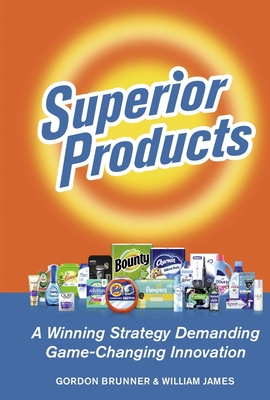Procter & Gamble is the largest global consumer products company, and for 186 years has consistently pursued success behind consumer-preferred, superior products. Starting from soap and candles, it has developed products behind its technical competencies and continued to expand into 10 global product categories today, with the leading brand in every one. Everyone pays lip service to the importance of product superiority. But words won't cut it. Product superiority must be demanded. It must be rewarded. It must be celebrated. And organization structures and processes need to be conceived and implemented to achieve it. This has to be led by senior line and R&D leadership, but importantly starting with the CEO and Board of Directors. Brunner and James spent their entire careers encompassing 75 years in active research and top level management of Research & Development at P&G. They were colleagues from their career beginnings, and crossed paths throughout the decades ahead. Brunner was the head of R&D under four CEO's, the first and only R&D employee on the Company's Board of Directors, and recounts their individual influence on product innovation. The essential role of the CEO on product innovation, and the importance of R&D having a "seat at the table" are vividly clear. James was Brunner's Chief of Staff, and led work that established the Company's first recognition society for researchers, as well as a widely acclaimed technologist career path. Both had major influence on acquiring, retaining and motivating top researchers to pursue careers focused on major product innovations. The authors only recount product innovations where one or both were involved either directly as a researcher, or as the manager responsible for the activity. They recount the superior product innovation paths behind six multi-billion dollar superior brands, as well as dozens of other large superior brands in global markets today. Every major innovation faces a "Valley of Death" - the tortuous path and resistance that a great new idea faces at the start, or the time when inevitable problems challenge its demise. The book's real-life stories recount the leadership required by researchers and company decision makers in successfully managing this critical juncture. They all carry vital lessons. The book is not all "good news" stories. It covers failures, and "if we only had done" examples. Further, it covers the failure of what was probably the greatest P&G technical achievement in hist












